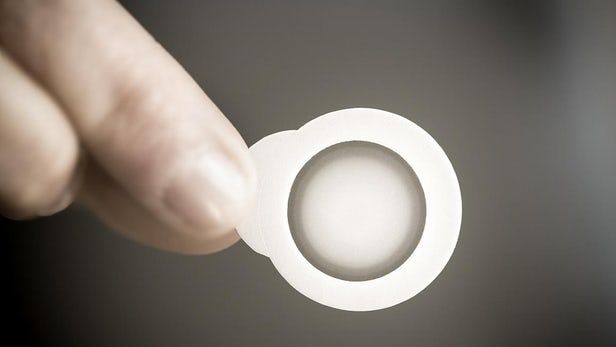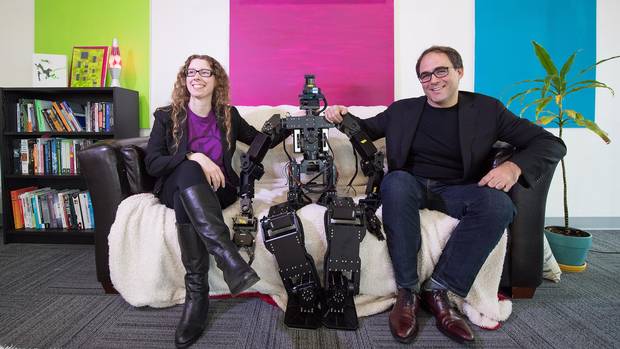Page 10472
Something needed to replace antibacterial soaps.
Whether they’re hand soap, shampoo, dish-washing liquid or laundry detergent, the majority of commonly-used soaps contain petroleum-based cleansing agents. Obtaining that petroleum isn’t exactly an eco-friendly process, plus it becomes a source of pollution once it goes down the drain. While there are petroleum-free soaps out there, they often don’t perform that well. Now, however, scientists have developed one that is claimed to actually work better than mainstream products.
The new soap was developed by a consortium led by the University of Minnesota. It combines renewable biodegradable ingredients such as fatty acids from soybeans or coconut, along with sugar from corn, to form a soap molecule known as oleo-furan-surfactant (OFS).
Oct 27, 2016
“Peanut patch” may save some lives
Posted by Shane Hinshaw in categories: biotech/medical, food, health
According to the American Academy of Allergy, Asthma & Immunology, more children are allergic to peanuts than to any other food. Unfortunately, the reactions can be lethal. In western cultures, peanut allergies are the leading cause of food-related anaphylaxis death. Needless to say, therefore, people with such allergies need to be protected against exposure to the nuts – and a skin patch may help provide that protection.
Made by biopharmaceutical company DBV Technologies, the Viaskin Peanut patch is applied to the arm or between the shoulder blades. It gradually delivers small amounts of peanut protein through the skin, allowing the wearer’s body to build up a tolerance for it.
The patch is currently the subject of an ongoing American study conducted by the Consortium of Food Allergy Research, and funded by the National Institute of Allergy and Infectious Diseases.
You may not typically be firing on all cylinders when your alarm clock goes off, but French startup Holi says it has created an alarm clock that will fire on all cylinders for you. The Bonjour is a voice-controlled, artificially intelligent device that learns about the user and acts as their personal assistant.
First things first – the Bonjour has a rather natty design that sits somewhere between contemporary cleanliness and retro stylishness. Its 5.3-in (13.5-cm) diameter circular body leans back on four short and stumpy legs, while a circular color HD screen is set into its center.
Like the Kello alarm clock, the Bonjour is aimed at enriching the user’s life beyond just waking them up. Whereas the Kello aims to improve the quality of the user’s sleep though, the Bonjour wants to improve their waking hours.
Oct 27, 2016
Gravitational Waves May Permanently Alter Spacetime
Posted by Shane Hinshaw in category: physics
For decades, physicists searched in vain for evidence of gravitational waves, the stretches and squeezes in spacetime that were first predicted by Albert Einstein’s theory of general relativity a century ago. Even Einstein himself was uncertain that they existed. But then, in February and June of this year, scientists detected two events that produced gravitational waves.
Now that gravitational-wave detection is likely becoming a regular occurrence—we’ll probably find evidence of many more in the next few years—physicists are again pondering an obscure detail about gravitational waves that was once also thought virtually impossible to observe—gravitational-wave memory, which involves permanent changes in the distance between two objects.
“For so many years, people were simply concentrating on making that first detection of gravitational waves,” says Paul Lasky, and astrophysicist at Monash University in Australia. “Once that first detection happened, our minds have become focused on the vast potential of this new field.”
Continue reading “Gravitational Waves May Permanently Alter Spacetime” »
Are you an avid supporter of aging research and a keen longevity activist?
The Biogerontology Research Foundation is offering select summer internships for talented individuals. You’d join a passionate and supportive team in researching diagnostic, prognostic, and therapeutic strategies; advising a panel of investors in developing a roadmap to promote longevity science and related technologies across the globe.
The advertised positions are 3 month internships, with the possibility of continuing afterwards. Free accommodation will be provided for in London, alongside a negotiable salary.
The Biogerontology Research Foundation is a UK based think tank dedicated to aging research and accelerating its application worldwide.
Oct 26, 2016
GPU’s Role in Artificial Intelligence Advances Featured at Conference
Posted by Karen Hurst in categories: biotech/medical, information science, robotics/AI, supercomputing
NEWS ANALYSIS: The confluence of big data, massively powerful computing resources and advanced algorithms is bringing new artificial intelligence capabilities to scientific research.
WASHINGTON, DC—Massively parallel supercomputing hardware along with advanced artificial intelligence algorithms are being harnessed to deliver powerful new research tools in science and medicine, according to Dr. France A. Córdova, Director of the National Science Foundation.
Córdova spoke Oct. 26 at GPU Technology Conference organized by Nvidia, a company that got its start making video cards for PCs and gaming systems, that now manufactures advanced graphics processor for high-performance servers and supercomputers.
Oct 26, 2016
Super-Cool Quantum Research Lab Heads to Space
Posted by Karen Hurst in categories: particle physics, quantum physics, space
Just WOW!
PULLMAN, Wash., Oct. 26 — Washington State University and NASA scientists are set to begin an investigation into the strange world of quantum physics on the International Space Station.
WSU physicists Peter Engels and Maren Mossman are part of a team studying the behavior of atoms laser-cooled to temperatures just a few billionths of a degree above absolute zero, the point where they behave like one wave of discrete particles.
Continue reading “Super-Cool Quantum Research Lab Heads to Space” »
Oct 26, 2016
Quantum Bit MRI Machine to See Shapes of Individual Biomolecules for Drug Research
Posted by Karen Hurst in categories: biotech/medical, computing, particle physics, quantum physics
Drug discovery is a long and difficult process that requires a comprehensive understanding of the molecular structures of compounds under investigation. It’s difficult to have an idea of the precise shape of complex molecules such as proteins, but researchers at University of Melbourne in Australia have come up with a way of seeing the location of individual atoms within biomolecules.
Using quantum bits, most notably utilized in quantum computer research, the investigators offer a way of producing a magnetic resonance sensor and a magnetic field gradient that can work as a tiny MRI machine. The machine would have the resolution capable of seeing single atoms components of larger molecules. This MRI machine has yet to be actually built, but the steps have been laid out based on comprehensive theoretical work. If it proves successful in practice, the technology may overcome current imaging techniques that rely on statistical averages and don’t work well on molecules that don’t crystallize well.
“In a conventional MRI machine large magnets set up a field gradient in all three directions to create 3D images; in our system we use the natural magnetic properties of a single atomic qubit,” said lead author of the research Viktor Perunicic. “The system would be fabricated on-chip, and by carefully controlling the quantum state of the qubit probe as it interacts with the atoms in the target molecule, we can extract information about the positions of atoms by periodically measuring the qubit probe and thus create an image of the molecule’s structure.”
Oct 26, 2016
D-Wave founder Geordie Rose takes quantum leap into smart robotics
Posted by Karen Hurst in category: robotics/AI
Investors from Amazon to the CIA are excited about secretive startup Kindred Systems and its ‘human-like intelligence’ advances.

















